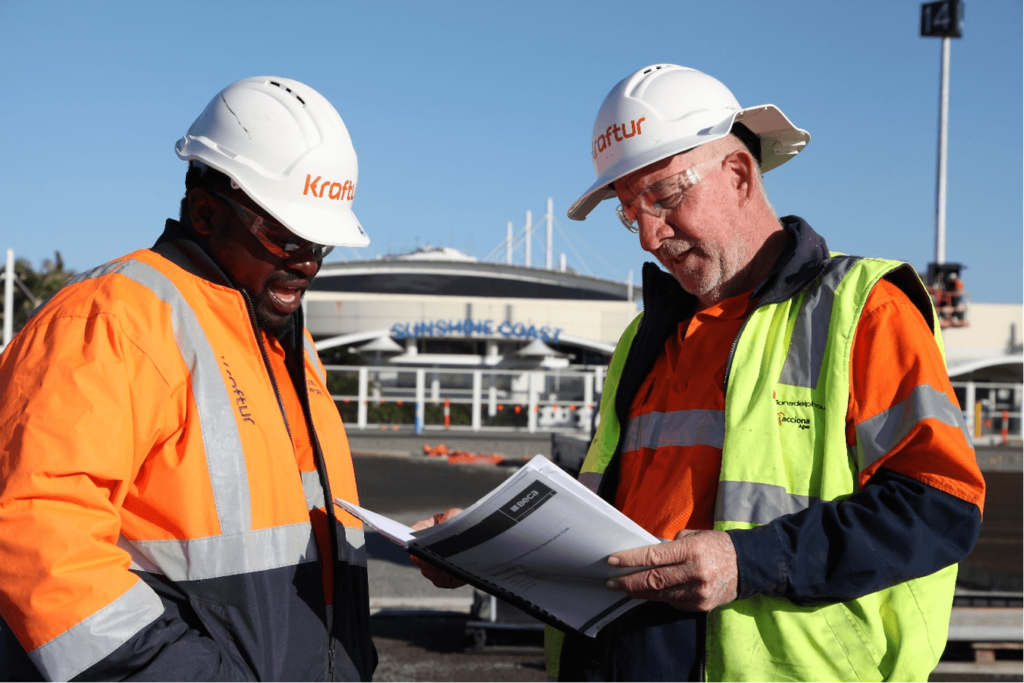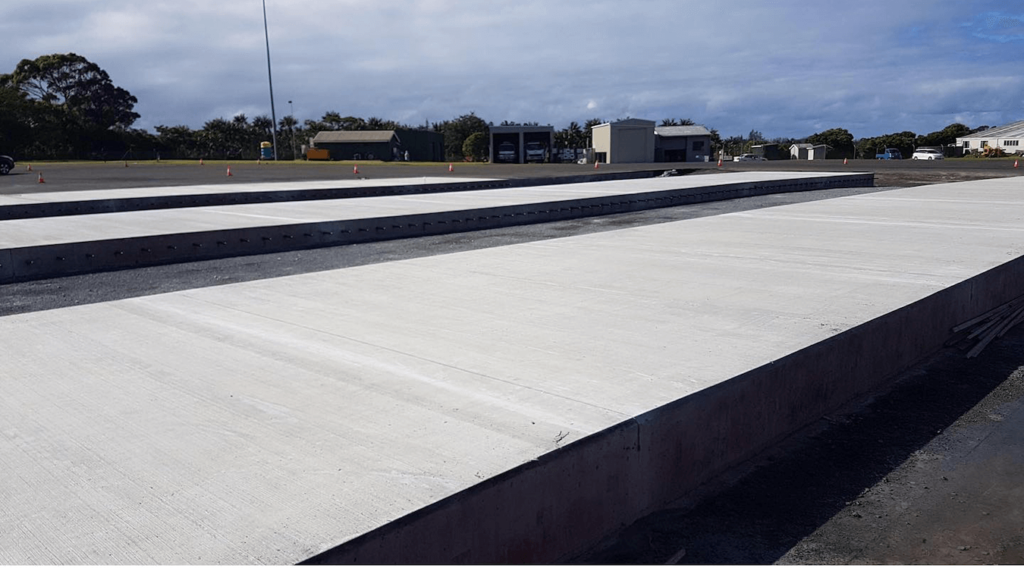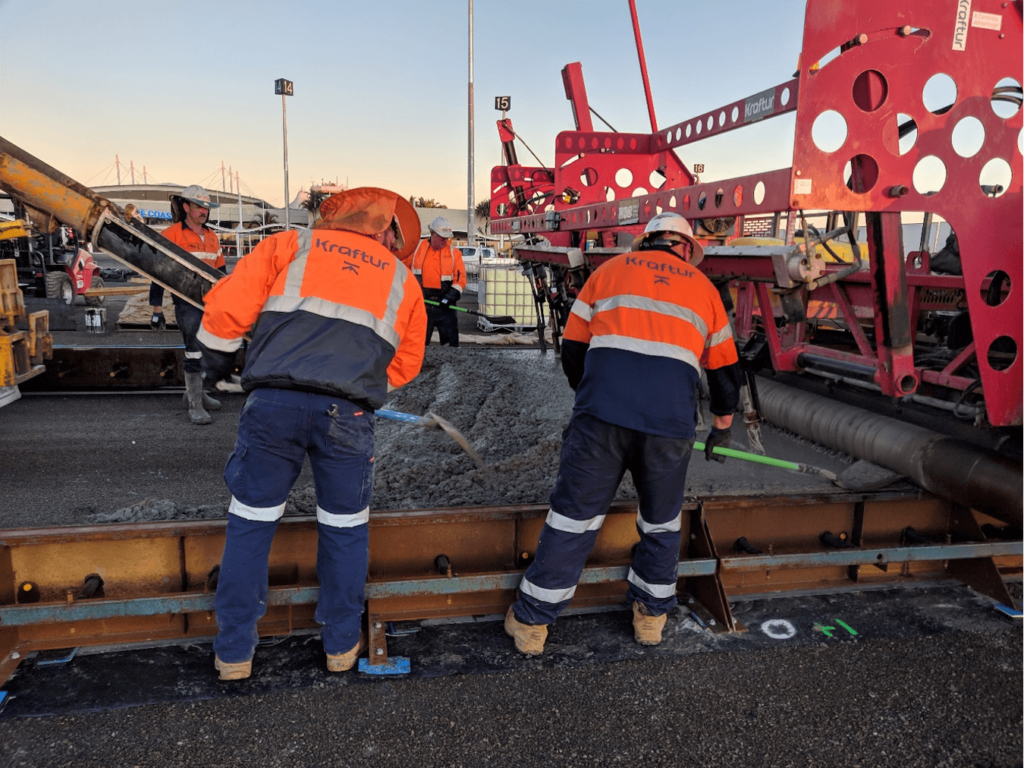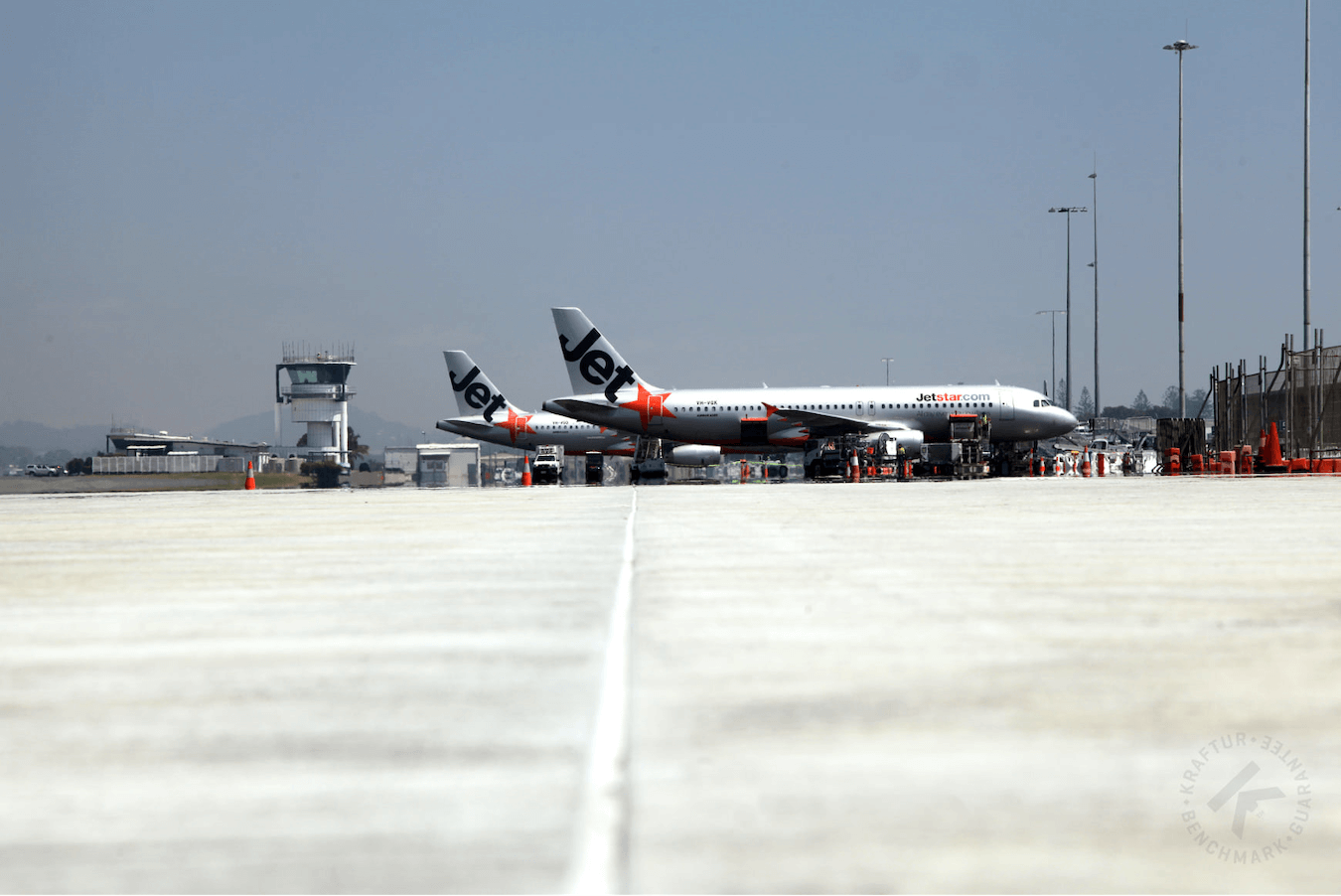Building an airport is probably one of the biggest projects you can undertake.
Once they are operational and commercial flights are in full flow, there is little scope for disruptive major repairs, as the infrastructure itself will be used at maximum capacity. This means one thing: whatever you build must be built well from the beginning.
The key part of an airport is of course the runway. It is here that thousands of lives and millions of dollars of equipment take off and touch down every hour of every single day. And the key part of the runway? Concrete. In this blog post, Kraftur will guide you through the methodologies of concrete aircraft pavement constructions.
The Basics
Kraftur is an industry leader in concrete aviation projects. We excel in large-scale, high-specification and high-density pavement for all kinds of aviation applications – from runways, taxiways, and aprons to hangars.
There is a lot that engineers need to consider when designing pavements.
When designing an aircraft pavement, engineers have to consider how a pavement will respond under high loads. Aircraft wheels produce huge deflections that must be factored into the design. Higher tyre pressures and braking forces require more shear resistant surfaces. Therefore, airfield pavements are generally thicker and comprise higher quality materials than road pavements.
Aircraft are less tolerant of uneven surfaces, low surface friction in wet weather conditions and loose materials on pavement. This means that aircraft pavements have some additional requirements which include being flatter than roadways to improve skid resistance as well durable enough, so they avoid cracking or spalling due to erosion over time.
Concrete can respond to load in two ways, by being flexible or rigid. Both rigid and flexible pavements are still in use, though rigid pavements are more modern.

Kraftur has learnt the importance of respecting the engineer’s specification in every respect. In aviation there are no short cuts! Our process starts with several workshop meetings with the crew at various levels to educate them on the specification and reasons for the onerous specification based on the principles of the design.
Our processes have evolved over a few projects to include several innovations in construction methodology with respect to formwork design, stripping methodology, screeding, environmental management and curing practices.

Concrete Aircraft Pavement Construction Materials
The concrete used for Aviation pavements is a mixture of aggregate, cement, and water. Air is also important, as are chemical additives. When used for aviation, concrete generally has these features: 40 mm maximum aggregate size (to enable load transfer across sawn joints), low workability (for true surface shape), high strength with minimum 4.5 MPa flexural strength and Portland cement, blended with 20–25 per cent fly ash.
Aircraft Pavement Concrete with its large aggregate and low slump is extremely hard to work with and the set time limitations are extremely tight. This requires precise logistics management, the right equipment and specialised training to achieve the desired outcome.
All these practices are checked and recheck in construction trials prior to actual work being performed.

Of course, these methodologies are just the start. There is much more to it than this. Your next step? Contact Kraftur to discuss your project requirements.


